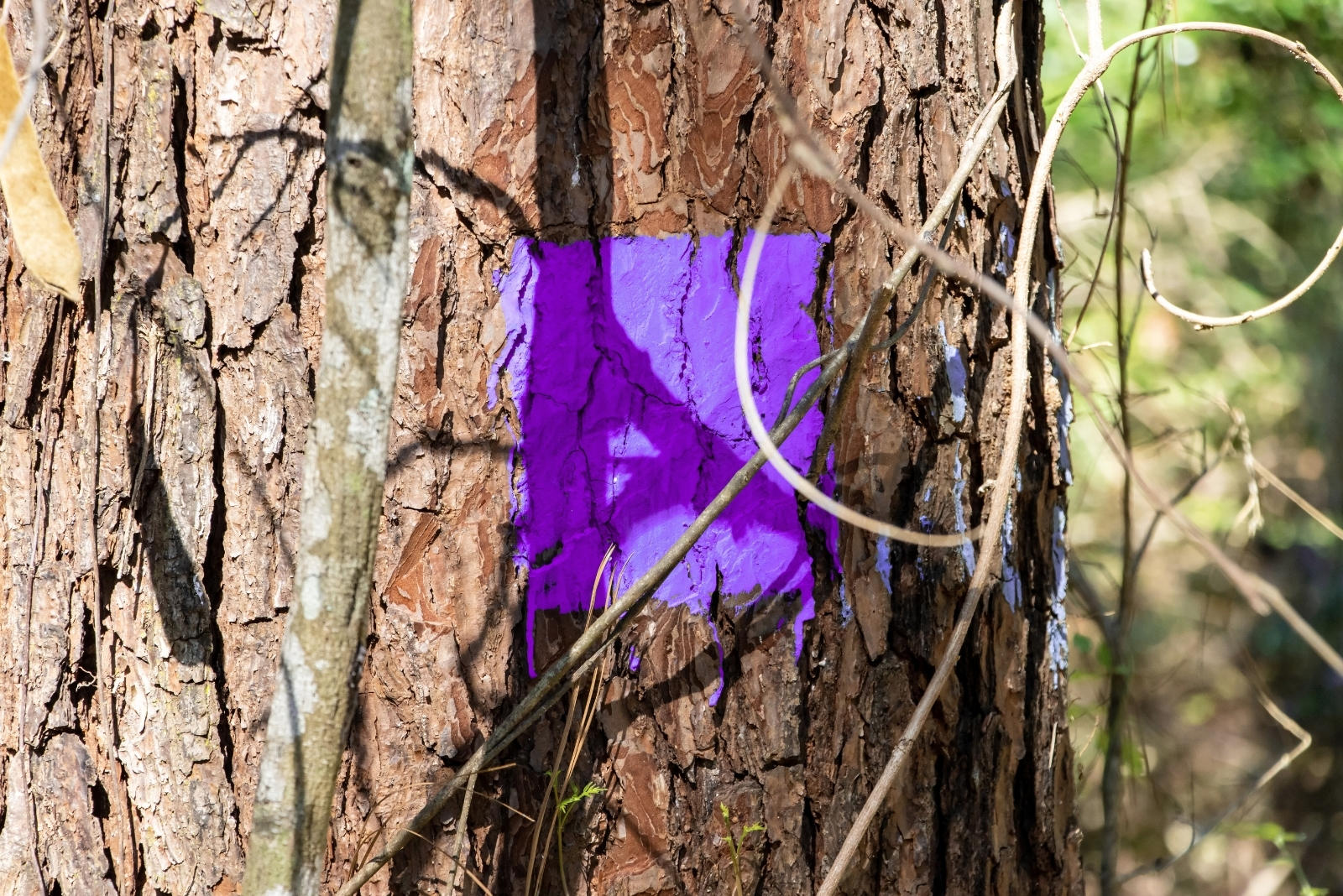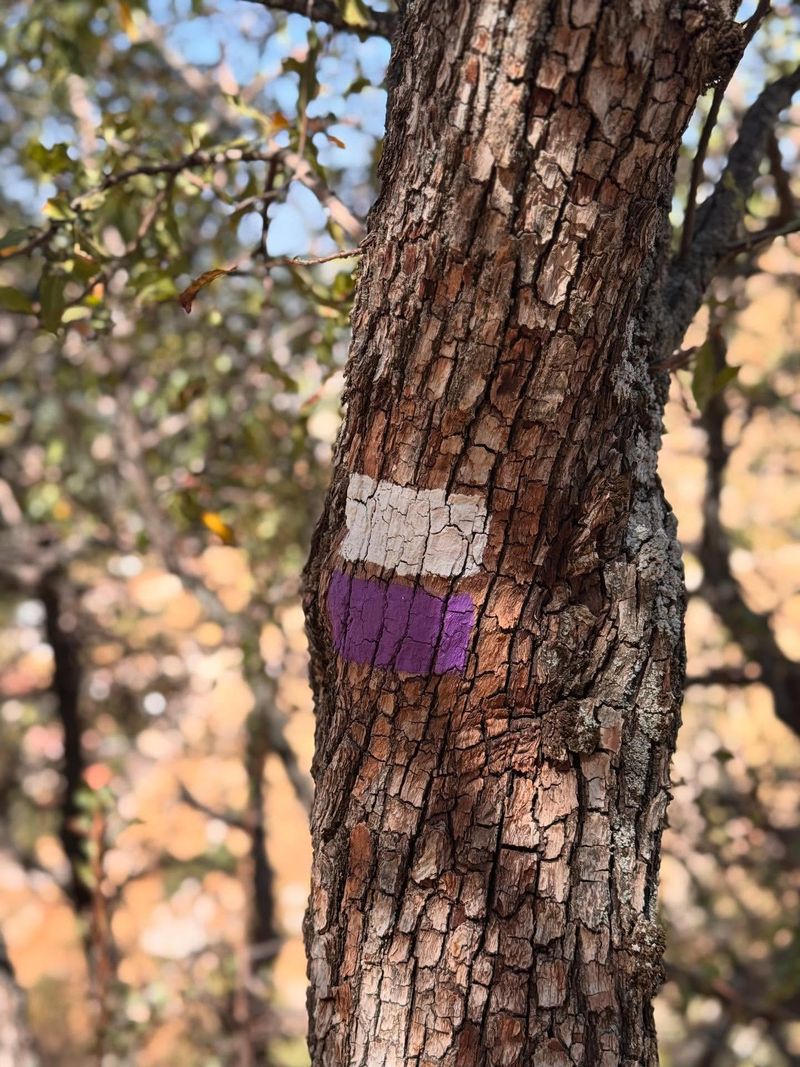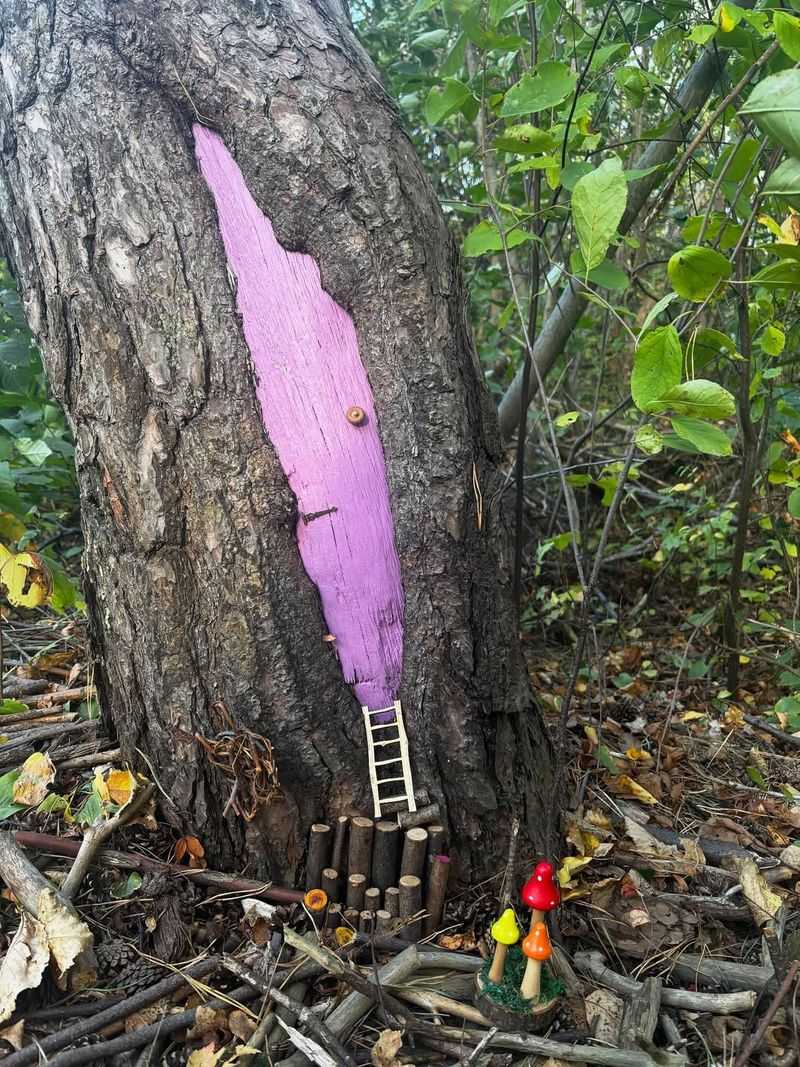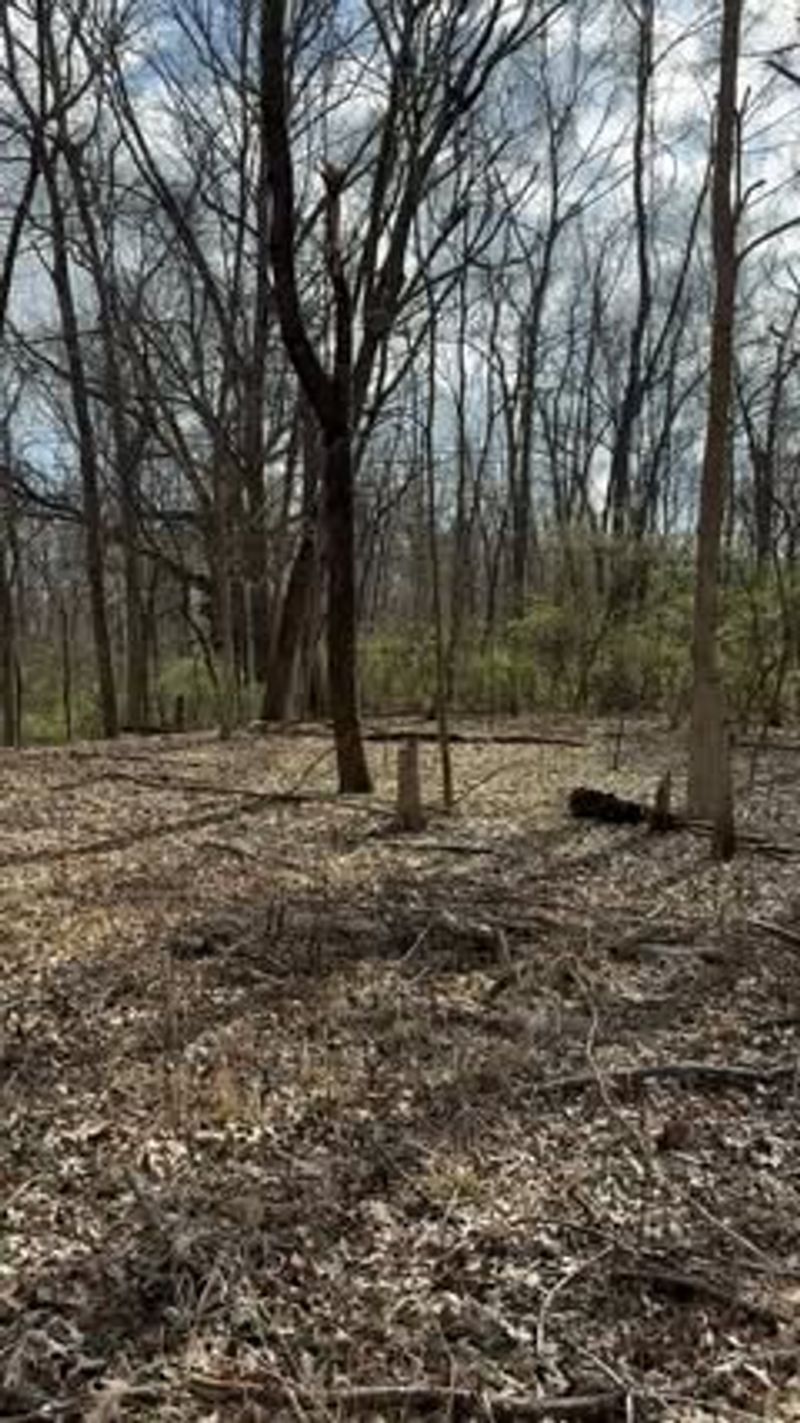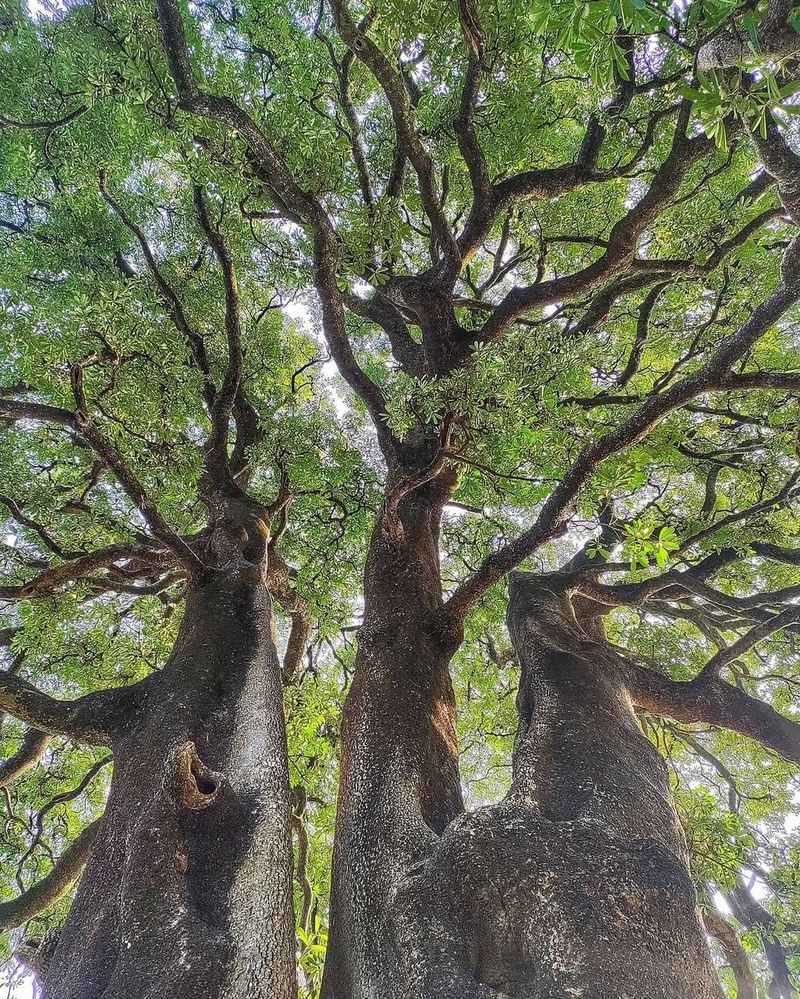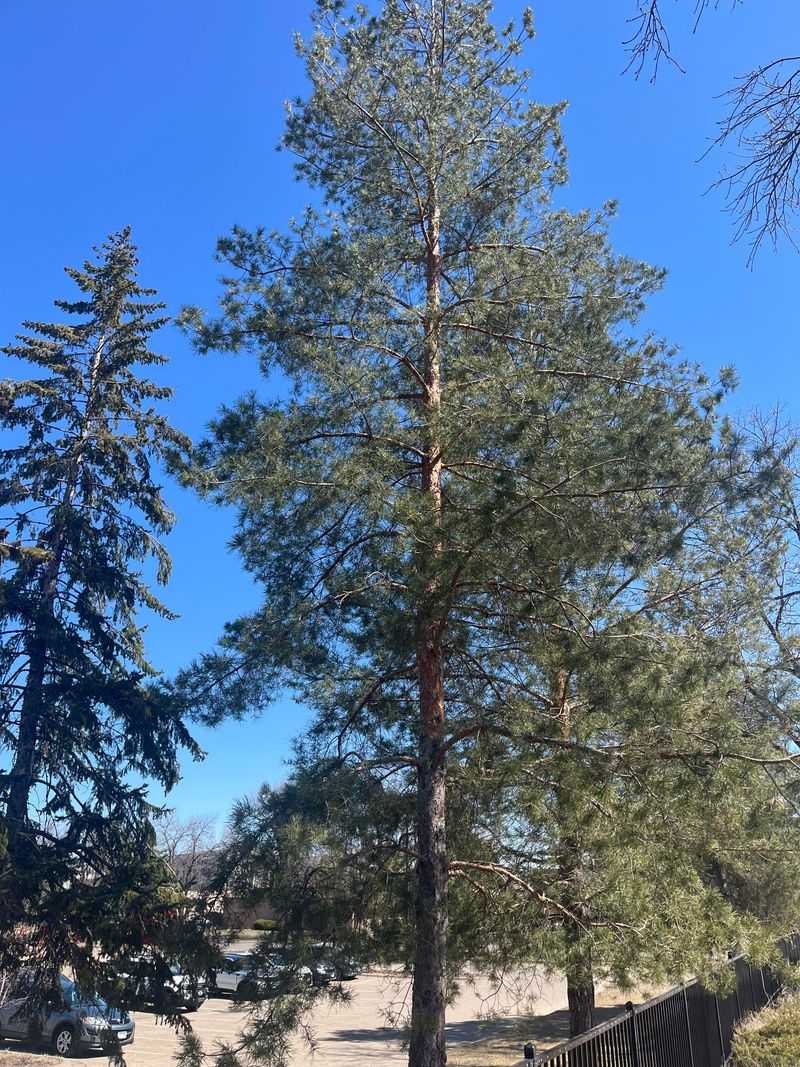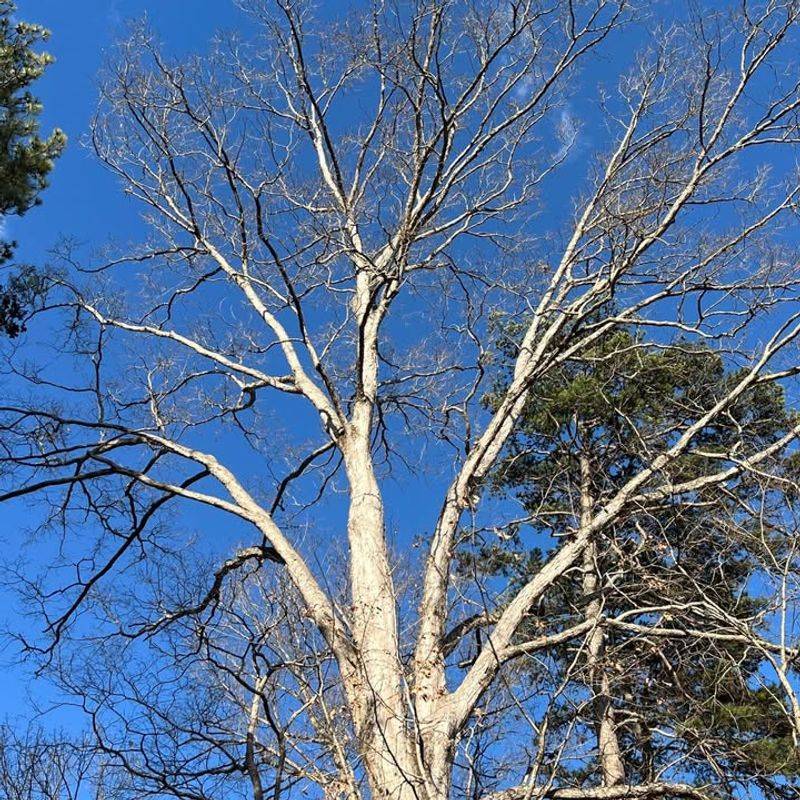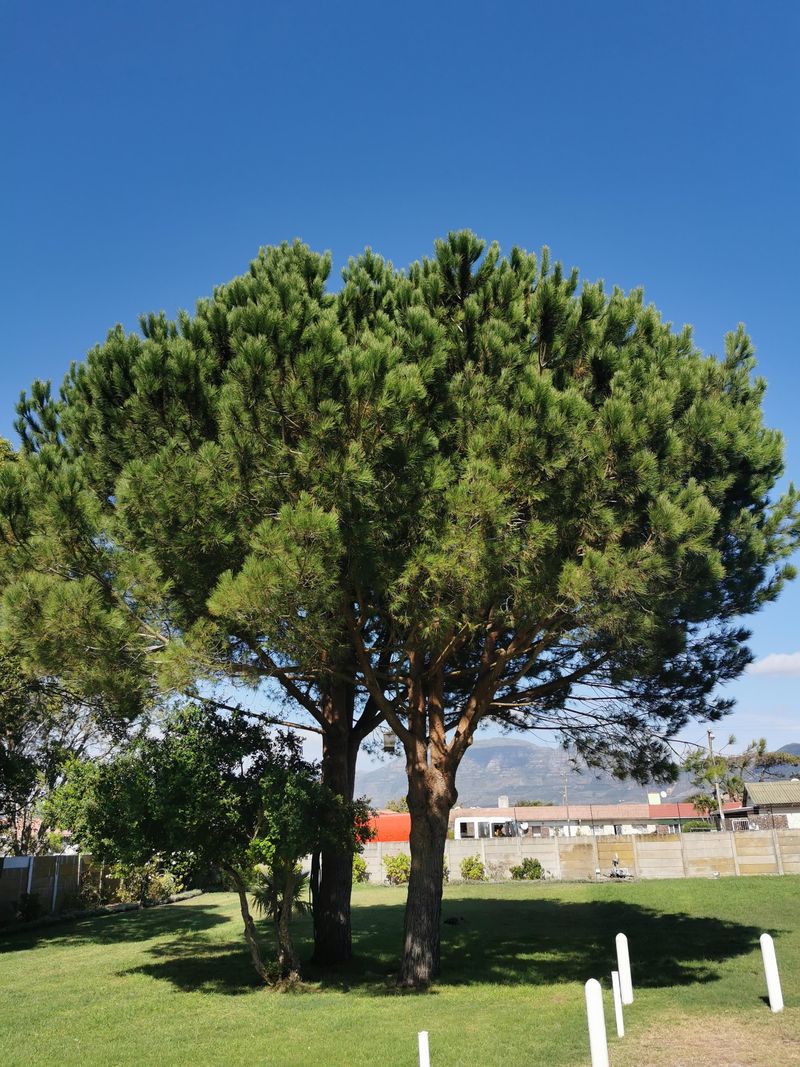Spotting purple trees in Indiana is more than a curious sight — it’s a sign of something deeper. I’ve been fascinated by the reasons behind this colorful tradition.
There’s history and science wrapped into one. Here are seven surprising explanations for Indiana trees painted purple.
1. Property Boundary Markers Replace No Trespassing Signs
Landowners across Indiana have discovered that purple paint lasts much longer than metal or wooden signs. Weather, vandals, and time can destroy traditional posted signs within months.
A single stripe of purple paint can remain visible for years, saving property owners money and effort. The color stands out against tree bark in every season, making boundaries crystal clear to anyone passing by.
Many rural communities in Indiana now prefer this method because it’s affordable and effective for marking private land.
2. Legal Protection Under Indiana Trespassing Laws
Indiana law officially recognizes purple paint as a legal no-trespassing warning. Property owners can use this method instead of posting written signs everywhere.
The paint must be placed at specific heights and intervals to meet legal requirements. When you see purple marks on trees, it carries the same legal weight as a posted sign saying “Keep Out.”
Ignoring these purple warnings in Indiana can result in trespassing charges, just like crossing a fence with warning signs attached to it.
3. Protecting Hunting Grounds and Wildlife Management Areas
Hunters and wildlife managers in Indiana use purple paint to mark private hunting lands. This helps prevent accidents and confusion during hunting season when safety is critical.
The bright color warns other hunters that they’re approaching someone else’s designated hunting area. It also protects wildlife management zones where conservation efforts are underway.
By marking trees purple, Indiana landowners create safer outdoor experiences for everyone while preserving important habitats for deer, turkey, and other animals.
4. Easier Visibility in Winter Snow and Fog
Purple stands out dramatically against white snow and gray fog that blanket Indiana during winter months. When everything looks the same color, these painted markers become lifesavers.
Hikers and snowshoers can easily spot boundaries even when visibility drops. The contrast between purple and winter landscapes is much stronger than other colors like yellow or orange.
Indiana experiences harsh winters, so having year-round visible markers helps prevent people from accidentally wandering onto private property when trails disappear under snow.
5. Cost-Effective Solution for Large Rural Properties
Farmers and ranchers in Indiana often own hundreds of acres that would be expensive to fence completely. Painting trees purple costs just a few dollars per gallon.
One person with a paintbrush can mark an entire property line in a weekend. Compare that to installing miles of fencing, which requires materials, labor, and constant maintenance.
For Indiana’s agricultural communities, purple paint offers a practical way to establish boundaries without breaking the bank or spending weeks on construction projects.
6. Environmental Benefits Over Traditional Signage
Metal and plastic signs eventually rust, break, or become litter in Indiana’s forests and fields. Purple paint is environmentally friendlier because it doesn’t create waste.
Trees naturally absorb and weather the paint over time without harm to the ecosystem. There are no metal stakes to rust into the soil or plastic pieces for animals to accidentally eat.
Indiana landowners who care about conservation appreciate that purple paint markers work with nature rather than adding more human-made materials to wild spaces.
7. Universal Symbol Recognized Across Multiple States
Purple paint laws exist in over 20 states, creating a universal outdoor language that travelers understand. Someone from Texas visiting Indiana immediately knows what purple trees mean.
This consistency helps tourists, hikers, and outdoor enthusiasts stay safe no matter where they explore. You don’t need to read different signs or learn new rules in each state.
Indiana’s adoption of this system connects it to a nationwide network of property marking that makes outdoor recreation safer and more predictable for everyone crossing state lines.

